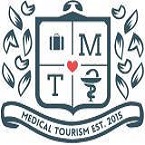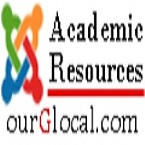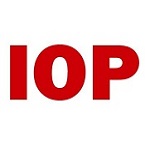Recommended Global Reproductive Medicine & Women Healthcare Webinars & Conferences
Europe & UK
Asia Pacific & Middle East
Regenerative Medicine 2024
About Conference
We invite all aspirants to attend “18th International Conference on Tissue Engineering & Regenerative Medicine” which is going to be held during February 26-27, 2024 in Dubai, UAE. The conference mainly focuses on two key topics viz. Tissue Engineering and Regenerative Medicine.
Regenerative Medicine 2024 provides a perfect environment to debate on recent approaches in Tissue Engineering and Regenerative Medicine for disease remediation and tissue repair.
18h International Conference on Tissue Engineering & Regenerative Medicine mainly focuses on Stem Cell Research and Tissue Engineering. Stem cell Research includes somatic cell treatment for various disease and conditions include Diabetes, atrophic arthritis , paralysis agitans , Alzheimer's disease , Osteoarthritis, Stroke and traumatic brain injury repair, learning disorder due to birth defect , medulla spinal is injury repair, Heart infarction, Anti-cancer treatments, Baldness reversal, Replace missing teeth, Repair hearing, Restore vision and repair damage to the cornea, Amyotrophic lateral sclerosis, Crohn's disease, Wound healing, Male infertility thanks to absence of spermatogonial stem cells etc., Tissue Engineering includes Bone tissue engineering, soft tissues, tissue imaging, Tissue implant, Cartilage and skin defects are a special focus alongside applying basic science and engineering principles from diverse areas towards solving clinically pertinent biomedical problems.
Sessions
Track 01- Scaffolds
Scaffolds are one among the three most vital essentials constituting the essential concept of Regenerative Medicine, and are included within the core technology of Regenerative Medicine. Every day thousands of surgical procedures are done to exchange or repair tissue that has been damaged through disease or trauma. The developing field of tissue engineering (TE) aims to regenerate damaged tissues by combining cells from the body with highly porous scaffold biomaterials, which act as templates for tissue regeneration, to guide the growth of new tissue. Scaffolds features a prominent role in tissue regeneration the designs, fabrication, 3D models, surface ligands and molecular architecture, nanoparticle-cell interactions and porous of the scaffolds are been utilized in the field in attempts to regenerate different tissues and organs within the body. The world somatic cell market was approximately 2.715 billion dollars in 2010, and with a rate of growth of 16.8% annually, a market of 6.877 billion dollars are going to be formed in 2016. From 2017, the expected annual growth rate is 10.6%, which would expand the market to 11.38 billion dollars by 2022.
Related Regenerative Medicine Conferences | Stem Cell Conferences | Stem Cell Congress | Tissue Science Conferences
Europe:
EuroStemCell (European Consortium for Stem Cell Research); German Stem Cell Network (GSCN); German Society for Stem Cell Research (GSZ); Stem Cell Network North Rhine-Westphalia (NRW); Norwegian Center for Stem Cell Research (NCSCR);
USA:
California Institute for Regenerative Medicine (CIRM); New York Stem Cell Foundation (NYSCF); Tissue Engineering International & Regenerative Medicine Society (TERMIS); International Society for Stem Cell Research (ISSCR);
Asia:
The New South Wales Stem Cell Network; Korean Society for Stem Cell Research; Japanese Society for Regenerative Medicine; Taiwan Society for Stem Cell Research; Stem Cell Society Singapore (SCSS);
Track 02- Cord Blood Stem Cells and Regenerative Medicine
Recently, cord blood stems cells are developed within the treatment of various diseases, including a broad range of cancers, blood disorders, and genetic diseases. During a cord blood transplant, stem cells are infused in to a patient’s bloodstream for healing and repairing damaged cells and tissue. During a successful transplant, new healthy system has been created. The natural power and purity of newborn's cord blood are liable for healthy development during gestation. Cord blood applications have developed beyond transplant medicine into the areas of regenerative medicine including brain injuries, autism, Cardiac Problems, and Autoimmune Deficiencies. the newest research in routine transplantation of cord blood are reviewed followed by the critical role of cord blood stem cells in regenerative medicine research and novel approaches using cord blood as a source of blood for transfusion.
Related Regenerative Medicine Conferences | Stem Cell Conferences | Stem Cell Congress | Tissue Science Conferences
Europe:
EuroStemCell (European Consortium for Stem Cell Research); German Stem Cell Network (GSCN); German Society for Stem Cell Research (GSZ); Stem Cell Network North Rhine-Westphalia (NRW); Norwegian Center for Stem Cell Research (NCSCR);
USA:
California Institute for Regenerative Medicine (CIRM); New York Stem Cell Foundation (NYSCF); Tissue Engineering International & Regenerative Medicine Society (TERMIS); International Society for Stem Cell Research (ISSCR);
Asia:
The New South Wales Stem Cell Network; Korean Society for Stem Cell Research; Japanese Society for Regenerative Medicine; Taiwan Society for Stem Cell Research; Stem Cell Society Singapore (SCSS);
Track 03- Bone and Cartilage Tissue Engineering
This interdisciplinary engineering has attracted much attention as a replacement therapeutic means may overcome the drawbacks involved within the current artificial organs and organ transplantation that are also aiming at replacing lost or severely damaged tissues or organs. Tissue engineering and regenerative medicine is an exciting research area that aims at regenerative alternatives to harvested tissues for organ transplantation with soft tissues. Although significant progress has been made within the tissue engineering field, many challenges remain and further development during this area would require on-going interactions and collaborations among the scientists from multiple disciplines, and in partnership with the regulatory and therefore the funding agencies. As a results of the medical and market potential, there's significant academic and company interest during this technology.
Related Regenerative Medicine Conferences | Stem Cell Conferences | Stem Cell Congress | Tissue Science Conferences
Europe:
EuroStemCell (European Consortium for Stem Cell Research); German Stem Cell Network (GSCN); German Society for Stem Cell Research (GSZ); Stem Cell Network North Rhine-Westphalia (NRW); Norwegian Center for Stem Cell Research (NCSCR);
USA:
California Institute for Regenerative Medicine (CIRM); New York Stem Cell Foundation (NYSCF); Tissue Engineering International & Regenerative Medicine Society (TERMIS); International Society for Stem Cell Research (ISSCR);
Asia:
The New South Wales Stem Cell Network; Korean Society for Stem Cell Research; Japanese Society for Regenerative Medicine; Taiwan Society for Stem Cell Research; Stem Cell Society Singapore (SCSS);
Track 04- Stem cells to Battle cancer
Stem cell transplant is treatment in some sorts of cancers like leukemia, myeloma, or some sorts of lymphoma. Somatic cell transplantation is that the procedure that restores blood-forming stem cells in patients who have had theirs destroyed by the very high doses of chemotherapy or radiotherapy that are wont to treat certain cancers.
Related Regenerative Medicine Conferences | Stem Cell Conferences | Stem Cell Congress | Tissue Science Conferences
Europe:
EuroStemCell (European Consortium for Stem Cell Research); German Stem Cell Network (GSCN); German Society for Stem Cell Research (GSZ); Stem Cell Network North Rhine-Westphalia (NRW); Norwegian Center for Stem Cell Research (NCSCR);
USA:
California Institute for Regenerative Medicine (CIRM); New York Stem Cell Foundation (NYSCF); Tissue Engineering International & Regenerative Medicine Society (TERMIS); International Society for Stem Cell Research (ISSCR);
Asia:
The New South Wales Stem Cell Network; Korean Society for Stem Cell Research; Japanese Society for Regenerative Medicine; Taiwan Society for Stem Cell Research; Stem Cell Society Singapore (SCSS);
Track 05- Novel Approaches guided in Tissue Engineering
GTR are dental surgical procedures that use barrier membranes to direct the expansion of latest bone and gingival tissue at sites with insufficient volumes or dimensions of bone or gingiva for correct function, esthetics or prosthetic restoration.
Related Regenerative Medicine Conferences | Stem Cell Conferences | Stem Cell Congress | Tissue Science Conferences
Europe:
EuroStemCell (European Consortium for Stem Cell Research); German Stem Cell Network (GSCN); German Society for Stem Cell Research (GSZ); Stem Cell Network North Rhine-Westphalia (NRW); Norwegian Center for Stem Cell Research (NCSCR);
USA:
California Institute for Regenerative Medicine (CIRM); New York Stem Cell Foundation (NYSCF); Tissue Engineering International & Regenerative Medicine Society (TERMIS); International Society for Stem Cell Research (ISSCR);
Asia:
The New South Wales Stem Cell Network; Korean Society for Stem Cell Research; Japanese Society for Regenerative Medicine; Taiwan Society for Stem Cell Research; Stem Cell Society Singapore (SCSS);
Track 06- Clinical Medicine
Clinical medicine relates to medicine field that deals mainly with the study and practice of drugs supported the interrogation of the patient. In clinical medicine, medical practitioners assess patients so as to diagnose, treat, and stop disease
Related Regenerative Medicine Conferences | Stem Cell Conferences | Stem Cell Congress | Tissue Science Conferences
Europe:
EuroStemCell (European Consortium for Stem Cell Research); German Stem Cell Network (GSCN); German Society for Stem Cell Research (GSZ); Stem Cell Network North Rhine-Westphalia (NRW); Norwegian Center for Stem Cell Research (NCSCR);
USA:
California Institute for Regenerative Medicine (CIRM); New York Stem Cell Foundation (NYSCF); Tissue Engineering International & Regenerative Medicine Society (TERMIS); International Society for Stem Cell Research (ISSCR);
Asia:
The New South Wales Stem Cell Network; Korean Society for Stem Cell Research; Japanese Society for Regenerative Medicine; Taiwan Society for Stem Cell Research; Stem Cell Society Singapore (SCSS);
Track 07- Clinical trials with Stem Cells
Stem cell treatments and clinical trials are happening for over 40 years; however we are still within the initial stages of somatic cell therapy being utilized as an efficient alternative treatment method to traditional pharmaceutical based treatments. Much of the first add somatic cell clinical trials focused on the general effectiveness and safety of the procedures involved. the first concern with any new treatment is that the future safety and standardization of results. There are countless journals and research papers focusing in on these clinical trials that have revealed promising results from these initial trials round the world.
Related Regenerative Medicine Conferences | Stem Cell Conferences | Stem Cell Congress | Tissue Science Conferences
Europe:
EuroStemCell (European Consortium for Stem Cell Research); German Stem Cell Network (GSCN); German Society for Stem Cell Research (GSZ); Stem Cell Network North Rhine-Westphalia (NRW); Norwegian Center for Stem Cell Research (NCSCR);
USA:
California Institute for Regenerative Medicine (CIRM); New York Stem Cell Foundation (NYSCF); Tissue Engineering International & Regenerative Medicine Society (TERMIS); International Society for Stem Cell Research (ISSCR);
Asia:
The New South Wales Stem Cell Network; Korean Society for Stem Cell Research; Japanese Society for Regenerative Medicine; Taiwan Society for Stem Cell Research; Stem Cell Society Singapore (SCSS);
Track 08- Biomaterials & Bioengineering
Biomaterials are being utilized for the social insurance applications from old circumstances. In any case, consequent development has made them more flexible and has expanded their utility. Biomaterials have reformed the territories like bioengineering and tissue designing for the advancement of novel methodologies to battle perilous infections. Together with biomaterials, immature microorganism innovation is additionally being utilized to reinforce the present human services offices. These ideas and innovations are being utilized for the treatment of varied maladies like cardiovascular disappointment, cracks, profound skin wounds, then forth. Presentation of nanomaterial’s but is popping into a serious seek after a superior and an inexpensive social welfare. Mechanical headways are ongoing for the advancement of persistent observing and controlling glucose levels by the implantation of sensor chips.
Related Regenerative Medicine Conferences | Stem Cell Conferences | Stem Cell Congress | Tissue Science Conferences
Europe:
EuroStemCell (European Consortium for Stem Cell Research); German Stem Cell Network (GSCN); German Society for Stem Cell Research (GSZ); Stem Cell Network North Rhine-Westphalia (NRW); Norwegian Center for Stem Cell Research (NCSCR);
USA:
California Institute for Regenerative Medicine (CIRM); New York Stem Cell Foundation (NYSCF); Tissue Engineering International & Regenerative Medicine Society (TERMIS); International Society for Stem Cell Research (ISSCR);
Asia:
The New South Wales Stem Cell Network; Korean Society for Stem Cell Research; Japanese Society for Regenerative Medicine; Taiwan Society for Stem Cell Research; Stem Cell Society Singapore (SCSS);
Track 09- Biomarkers
Biomarkers, within the hands of clinical investigators, provide a dynamic and powerful approach to understanding the spectrum of diseases with obvious applications in analytic epidemiology, biomarkers and clinical research in disease prevention, diagnosis and disease management. Biomarkers have the extra potential to spot individuals vulnerable to particular diseases. This conference may be a podium that brings and shares collective knowledge and research explorations in biomarkers study. In the recent years, the knowledge about cancer biomarkers has increased largely providing an enormous potential for improving the management of cancer patients by improving the accuracy of detection and efficacy of treatment. Latest technological advancements have enabled the examination of the many possible biomarkers and renewed interest in developing new biomarkers. All such developments are often evidenced during this biomarker congress. Cancer Biomarkers, Molecular Biomarkers, Genomics biomarkers, Biomarkers in Clinical Research & Development, Biomarkers and Pathology
Related Regenerative Medicine Conferences | Stem Cell Conferences | Stem Cell Congress | Tissue Science Conferences
Europe:
EuroStemCell (European Consortium for Stem Cell Research); German Stem Cell Network (GSCN); German Society for Stem Cell Research (GSZ); Stem Cell Network North Rhine-Westphalia (NRW); Norwegian Center for Stem Cell Research (NCSCR);
USA:
California Institute for Regenerative Medicine (CIRM); New York Stem Cell Foundation (NYSCF); Tissue Engineering International & Regenerative Medicine Society (TERMIS); International Society for Stem Cell Research (ISSCR);
Asia:
The New South Wales Stem Cell Network; Korean Society for Stem Cell Research; Japanese Society for Regenerative Medicine; Taiwan Society for Stem Cell Research; Stem Cell Society Singapore (SCSS);
Track 10- Regeneration & Therapeutics
Some parts of our bodies can repair themselves quite well after injury, but others don’t repair in the least. We certainly can’t regrow an entire leg or arm, but some animals can regrow - or regenerate - whole body parts. Regeneration means the regrowth of a damaged or missing organ part from the remaining tissue. As adults, humans can regenerate some organs, like the liver. If a part of the liver is lost by disease or injury, the liver grows back to its original size, though not its original shape. And our skin is consistently being renewed and repaired. Unfortunately many other human tissues don’t regenerate, and a goal in regenerative medicine is to seek out ways to kick-start tissue regeneration within the body, or to engineer replacement tissues.
Related Regenerative Medicine Conferences | Stem Cell Conferences | Stem Cell Congress | Tissue Science Conferences
Europe:
EuroStemCell (European Consortium for Stem Cell Research); German Stem Cell Network (GSCN); German Society for Stem Cell Research (GSZ); Stem Cell Network North Rhine-Westphalia (NRW); Norwegian Center for Stem Cell Research (NCSCR);
USA:
California Institute for Regenerative Medicine (CIRM); New York Stem Cell Foundation (NYSCF); Tissue Engineering International & Regenerative Medicine Society (TERMIS); International Society for Stem Cell Research (ISSCR);
Asia:
The New South Wales Stem Cell Network; Korean Society for Stem Cell Research; Japanese Society for Regenerative Medicine; Taiwan Society for Stem Cell Research; Stem Cell Society Singapore (SCSS);
Track 11- Rejuvenation
Rejuvenation may be a medical discipline focused on the sensible reversal of the aging process. Rejuvenation is distinct from life extension. Life extension strategies often study the causes of aging and check out to oppose those causes so as to slow aging. Rejuvenation is that the reversal of aging and thus requires a special strategy, namely repair of the damage that's related to aging or replacement of damaged tissue with new tissue. Rejuvenation are often a way of life extension, but most life extension strategies don't involve rejuvenation.
Related Regenerative Medicine Conferences | Stem Cell Conferences | Stem Cell Congress | Tissue Science Conferences
Europe:
EuroStemCell (European Consortium for Stem Cell Research); German Stem Cell Network (GSCN); German Society for Stem Cell Research (GSZ); Stem Cell Network North Rhine-Westphalia (NRW); Norwegian Center for Stem Cell Research (NCSCR);
USA:
California Institute for Regenerative Medicine (CIRM); New York Stem Cell Foundation (NYSCF); Tissue Engineering International & Regenerative Medicine Society (TERMIS); International Society for Stem Cell Research (ISSCR);
Asia:
The New South Wales Stem Cell Network; Korean Society for Stem Cell Research; Japanese Society for Regenerative Medicine; Taiwan Society for Stem Cell Research; Stem Cell Society Singapore (SCSS);
Track 12- Immunotherapy
Immunotherapy, also called biologic treatment, may be a quite disease treatment that lifts the body's common guards to battle the malignancy. It utilizes substances made by the body or during a research center to reinforce or re-establish safe framework work. Immunotherapy may go in these ways: Halting or abating the event of tumor cells, preventing malignancy from spreading to different parts of the body, helping the safe framework work better at crushing disease cells. There are several sorts of immunotherapy, including: Monoclonal antibodies, Non-specific immunotherapies, oncolytic virus therapy, T-cell therapy, Cancer vaccines
Related Regenerative Medicine Conferences | Stem Cell Conferences | Stem Cell Congress | Tissue Science Conferences
Europe:
EuroStemCell (European Consortium for Stem Cell Research); German Stem Cell Network (GSCN); German Society for Stem Cell Research (GSZ); Stem Cell Network North Rhine-Westphalia (NRW); Norwegian Center for Stem Cell Research (NCSCR);
USA:
California Institute for Regenerative Medicine (CIRM); New York Stem Cell Foundation (NYSCF); Tissue Engineering International & Regenerative Medicine Society (TERMIS); International Society for Stem Cell Research (ISSCR);
Asia:
The New South Wales Stem Cell Network; Korean Society for Stem Cell Research; Japanese Society for Regenerative Medicine; Taiwan Society for Stem Cell Research; Stem Cell Society Singapore (SCSS);
Track 13- Stem cell treatment for Diabetes
Insulin may be a vital hormone that's produced by the pancreas and helps to stay the body’s blood glucose (glucose) levels in restraint. Diabetes is caused when there's an imbalance of insulin within the body. Type 1 Diabetes: this is often usually diagnosed during childhood where the body makes little or no or no insulin. In conventional therapy, there's only how to take care of the proper levels of insulin with daily injections. Type 2 Diabetes: during this condition, the body becomes resistive to insulin and therefore the pancreas loses the potential to form enough insulin which is required to stay blood sugar levels normal. This is often actually because of incorrect diet, lack or exercise or being overweight. Most diabetics suffer from Type 2 Diabetes.
Related Regenerative Medicine Conferences | Stem Cell Conferences | Stem Cell Congress | Tissue Science Conferences
Europe:
EuroStemCell (European Consortium for Stem Cell Research); German Stem Cell Network (GSCN); German Society for Stem Cell Research (GSZ); Stem Cell Network North Rhine-Westphalia (NRW); Norwegian Center for Stem Cell Research (NCSCR);
USA:
California Institute for Regenerative Medicine (CIRM); New York Stem Cell Foundation (NYSCF); Tissue Engineering International & Regenerative Medicine Society (TERMIS); International Society for Stem Cell Research (ISSCR);
Asia:
The New South Wales Stem Cell Network; Korean Society for Stem Cell Research; Japanese Society for Regenerative Medicine; Taiwan Society for Stem Cell Research; Stem Cell Society Singapore (SCSS);
Track 14- Applications of Tissue engineering & Regenerative Medicine
There are many applications of Tissue engineering but majorly they're utilized in Organ Transplantation and biomedical cloning like Bio Artificial liver device, artificial pancreas, artificial bladders, and Cartilage. When there's damage in our body cells or organs we use tissue engineering techniques to beat the damage by replacing the old cell. There’s wide selection of Tissue Engineered product or materials which are wont to cure diseases in human and save life.
Related Regenerative Medicine Conferences | Stem Cell Conferences | Stem Cell Congress | Tissue Science Conferences
Europe:
EuroStemCell (European Consortium for Stem Cell Research); German Stem Cell Network (GSCN); German Society for Stem Cell Research (GSZ); Stem Cell Network North Rhine-Westphalia (NRW); Norwegian Center for Stem Cell Research (NCSCR);
USA:
California Institute for Regenerative Medicine (CIRM); New York Stem Cell Foundation (NYSCF); Tissue Engineering International & Regenerative Medicine Society (TERMIS); International Society for Stem Cell Research (ISSCR);
Asia:
The New South Wales Stem Cell Network; Korean Society for Stem Cell Research; Japanese Society for Regenerative Medicine; Taiwan Society for Stem Cell Research; Stem Cell Society Singapore (SCSS);
Track 15- Bioreactors in Tissue Engineering
Bioreactors in Tissue Engineering a bioreactor may be a device that utilizations mechanical shall impact organic procedures. In tissue designing bioreactors are often utilized to assist within the in vitro advancement of latest tissue by giving biochemical and physical administrative signs to cells and urging them to experience separation also on create extracellular network before in vivo implantation. This section examines the necessity for bioreactors in tissue building, the varied sorts of bioreactor that exist, the methods by which they empower cells and therefore the way their usefulness is represented by the prerequisites of the actual tissue being built and the cell compose experiencing incitement.
Related Regenerative Medicine Conferences | Stem Cell Conferences | Stem Cell Congress | Tissue Science Conferences
Europe:
EuroStemCell (European Consortium for Stem Cell Research); German Stem Cell Network (GSCN); German Society for Stem Cell Research (GSZ); Stem Cell Network North Rhine-Westphalia (NRW); Norwegian Center for Stem Cell Research (NCSCR);
USA:
California Institute for Regenerative Medicine (CIRM); New York Stem Cell Foundation (NYSCF); Tissue Engineering International & Regenerative Medicine Society (TERMIS); International Society for Stem Cell Research (ISSCR);
Asia:
The New South Wales Stem Cell Network; Korean Society for Stem Cell Research; Japanese Society for Regenerative Medicine; Taiwan Society for Stem Cell Research; Stem Cell Society Singapore (SCSS);
Track 16- Biochips & Tissue chips
Biochips ask the entire fundamental functional unit, capable of performing multi biochemical tasks simultaneously. Tissue chips on the other hand are similar miniaturized units which can replace a tissue or some a neighborhood of it, enabling the organ to work normally. Both biochips & tissue chips have been elemental in tissue engineering technology and have proven to be of utmost importance in the same arena. DNA microarray also called as biochip in simple terms consists of a two dimensional grid system where upon sensors or solid flat substrates are incorporated. These solid substrates are often either charged a touch like silicon or glass or can also be consisting of integrated circuitry units that perform best in signal transduction studies. These kinds of microarrays have application in micromechanical studies.
Related Regenerative Medicine Conferences | Stem Cell Conferences | Stem Cell Congress | Tissue Science Conferences
Europe:
EuroStemCell (European Consortium for Stem Cell Research); German Stem Cell Network (GSCN); German Society for Stem Cell Research (GSZ); Stem Cell Network North Rhine-Westphalia (NRW); Norwegian Center for Stem Cell Research (NCSCR);
USA:
California Institute for Regenerative Medicine (CIRM); New York Stem Cell Foundation (NYSCF); Tissue Engineering International & Regenerative Medicine Society (TERMIS); International Society for Stem Cell Research (ISSCR);
Asia:
The New South Wales Stem Cell Network; Korean Society for Stem Cell Research; Japanese Society for Regenerative Medicine; Taiwan Society for Stem Cell Research; Stem Cell Society Singapore (SCSS);
Track 17- Cancer Stem Cells
Cancer stem cells (CSCs) are cancer cells (found within tumors or hematological cancers) that possess characteristics associated with normal stem cells, specifically the facility to supply rise to all or any or any cell types found during a particular cancer sample. CSCs are therefore tumorigenic (tumor-forming), perhaps in contrast to other non-tumorigenic cancer cells. CSCs may generate tumors through the somatic cell processes of self-renewal and differentiation into multiple cell types. Such cells are hypothesized to continue tumors as a particular population and cause relapse and metastasis by giving rise to new tumors. Therefore, development of specific therapies targeted at CSCs holds hope for improvement of survival and quality of lifetime of cancer patients, especially for patients with metastatic disease.
Related Regenerative Medicine Conferences | Stem Cell Conferences | Stem Cell Congress | Tissue Science Conferences
Europe:
EuroStemCell (European Consortium for Stem Cell Research); German Stem Cell Network (GSCN); German Society for Stem Cell Research (GSZ); Stem Cell Network North Rhine-Westphalia (NRW); Norwegian Center for Stem Cell Research (NCSCR);
USA:
California Institute for Regenerative Medicine (CIRM); New York Stem Cell Foundation (NYSCF); Tissue Engineering International & Regenerative Medicine Society (TERMIS); International Society for Stem Cell Research (ISSCR);
Asia:
The New South Wales Stem Cell Network; Korean Society for Stem Cell Research; Japanese Society for Regenerative Medicine; Taiwan Society for Stem Cell Research; Stem Cell Society Singapore (SCSS);
Track 18- Chemotherapy
Chemotherapy is a widely used treatment for cancer. It usually entails the utilization of chemicals to destroy cancer cells on a selective basis. As a part of the body's natural action, cells are constantly replaced through a process of dividing and growing. When cancer occurs, cells reproduce in an uncontrolled manner. More and more cells are produced, and that they start to occupy an increasing amount of space until they occupy the space previously inhabited by useful cells. It usually is employed to treat patients with cancer that has spread from the place within the body where it metastasized. Chemotherapy destroys cancer cells anywhere within the body. It even kills cells that have broken off from the main tumor & travel through the blood or lymph systems to the other parts of the body.
Chemotherapy drugs: Impair mitosis, or prevent cellular division , as within the case of cytotoxic drugs. Target the cancer cells' food source, which consists of the enzymes and hormones they have to grow. Apoptosis stop the expansion of latest blood vessels that provide a tumor so as to starve it. A single drug or a mixture of medicine is employed. These are often delivered either directly into the bloodstream, to attack cancer cells throughout the body, or they will be targeted to specific cancer sites.
Related Regenerative Medicine Conferences | Stem Cell Conferences | Stem Cell Congress | Tissue Science Conferences
Europe:
EuroStemCell (European Consortium for Stem Cell Research); German Stem Cell Network (GSCN); German Society for Stem Cell Research (GSZ); Stem Cell Network North Rhine-Westphalia (NRW); Norwegian Center for Stem Cell Research (NCSCR);
USA:
California Institute for Regenerative Medicine (CIRM); New York Stem Cell Foundation (NYSCF); Tissue Engineering International & Regenerative Medicine Society (TERMIS); International Society for Stem Cell Research (ISSCR);
Asia:
The New South Wales Stem Cell Network; Korean Society for Stem Cell Research; Japanese Society for Regenerative Medicine; Taiwan Society for Stem Cell Research; Stem Cell Society Singapore (SCSS);
Track 19- Tissue Regeneration
In the field of biology, Regeneration is that the progression of renewal, regeneration, and growth that creates it possible for genomes, cells, organ regeneration to natural changes or events that cause damage or disturbance. This study is administered as craniofacial tissue engineering, in-situ tissue regeneration, adipose-derived stem cells for regenerative medicine which is additionally a breakthrough in cell culture technology. The study isn't stopped with the regeneration of tissue where it's further administered in relation with cell signaling, morphogenetic proteins. Most of the neurological disorders occurred accidental having a scope of recovery by replacement or repair of intervertebral discs repair, fusion, and lots of more developments. The worldwide marketplace for tissue engineering and regeneration products like scaffolds, tissue implants, biomimetic materials reached $55.9 billion in 2010 and it's expected to succeed in $89.7 billion by 2016 at a compounded annual rate of growth (CAGR) of 8.4%. It grows to $135 billion by 2024.
Related Regenerative Medicine Conferences | Stem Cell Conferences | Stem Cell Congress | Tissue Science Conferences
Europe:
EuroStemCell (European Consortium for Stem Cell Research); German Stem Cell Network (GSCN); German Society for Stem Cell Research (GSZ); Stem Cell Network North Rhine-Westphalia (NRW); Norwegian Center for Stem Cell Research (NCSCR);
USA:
California Institute for Regenerative Medicine (CIRM); New York Stem Cell Foundation (NYSCF); Tissue Engineering International & Regenerative Medicine Society (TERMIS); International Society for Stem Cell Research (ISSCR);
Asia:
The New South Wales Stem Cell Network; Korean Society for Stem Cell Research; Japanese Society for Regenerative Medicine; Taiwan Society for Stem Cell Research; Stem Cell Society Singapore (SCSS);
Track 20- Advances in Stem Cell
Since the start of there has been an effective research within the field of somatic cell biology, recent advances within the field of somatic cell research mainly focused within the translation of scientific insights into new therapies. It represents a replacement strategy for organ and tissue repair in several pathologies. Additional treatment strategies are urgently needed thanks to donor organ shortage that costs many lives per annum and leads to lifelong immunosuppression. Stem cells are characterized by the power to renew themselves and differentiating into a various range of specialized cell types. Stem cells have potential to treat various diseases, genetic bone marrow disorders and therefore the treatment of malignant. Being all other somatic cell applications highly experimental, Moreover, there's a growing body of evidence showing that administration of stem cells results in the successful regeneration of tissues or organ.
Related Regenerative Medicine Conferences | Stem Cell Conferences | Stem Cell Congress | Tissue Science Conferences
Europe:
EuroStemCell (European Consortium for Stem Cell Research); German Stem Cell Network (GSCN); German Society for Stem Cell Research (GSZ); Stem Cell Network North Rhine-Westphalia (NRW); Norwegian Center for Stem Cell Research (NCSCR);
USA:
California Institute for Regenerative Medicine (CIRM); New York Stem Cell Foundation (NYSCF); Tissue Engineering International & Regenerative Medicine Society (TERMIS); International Society for Stem Cell Research (ISSCR);
Asia:
The New South Wales Stem Cell Network; Korean Society for Stem Cell Research; Japanese Society for Regenerative Medicine; Taiwan Society for Stem Cell Research; Stem Cell Society Singapore (SCSS);
Track 21- Materials and Designs for Tissue Engineering
Tissue engineering of musculoskeletal tissues, particularly bone and cartilage, may be a rapidly advancing field. In bone, technology has centered on bone graft substitute materials and therefore the development of biodegradable scaffolds. Recently, tissue engineering strategies have included cell and gene therapy. the supply of growth factors and therefore the expanding knowledge domain concerning the bone regeneration with modern techniques like recombinant signaling molecules, solid free morpheme fabrication of scaffolds, synthetic cartilage, Electrochemical deposition, fusion and ossification are new generated techniques for tissue-engineering applications. The worldwide marketplace for bone and cartilage repairs strategies is estimated about $300 million. During the last 10/15 years, the scientific community witnessed and reported the looks of several sources of stem cells with both osteo and chondrogenic potential.
Related Regenerative Medicine Conferences | Stem Cell Conferences | Stem Cell Congress | Tissue Science Conferences
Europe:
EuroStemCell (European Consortium for Stem Cell Research); German Stem Cell Network (GSCN); German Society for Stem Cell Research (GSZ); Stem Cell Network North Rhine-Westphalia (NRW); Norwegian Center for Stem Cell Research (NCSCR);
USA:
California Institute for Regenerative Medicine (CIRM); New York Stem Cell Foundation (NYSCF); Tissue Engineering International & Regenerative Medicine Society (TERMIS); International Society for Stem Cell Research (ISSCR);
Asia:
The New South Wales Stem Cell Network; Korean Society for Stem Cell Research; Japanese Society for Regenerative Medicine; Taiwan Society for Stem Cell Research; Stem Cell Society Singapore (SCSS);
Track 22- Tissue Engineering and 3D Printing
Aims to fabricate of multifunctional scaffolds that meet the mechanical, structural, and nutritional requirements supported optimized models. Computer-aided three-dimensional (3D) printing technology is driving major innovations in many areas, like engineering, manufacturing, art, education and medicine. It’s being applied to regenerative medicine to affect the need for tissues and organs suitable for transplantation. Recently, it's shown an excellent promise in tissue fabrication with structural control from micro- to macro-scale by employing a layer-by-layer approach. It involves additional complexities, like choice of materials, cell types, growth and differentiation factors, and technical challenges related to the sensitivities of living cells and thus the development of tissues. It’s been already used for the generation and transplantation of several tissues, including multi-layered skin, bone, vascular grafts, tracheal splints, heart tissue and cartilaginous structures. Other applications involve developing the high-throughput 3D-bioprinted tissue models for analysis, drug discovery, and pharmacology. This track will cover several approaches that have advanced the world of 3D technology through novel fabrication methods of tissue engineering constructs.
Related Regenerative Medicine Conferences | Stem Cell Conferences | Stem Cell Congress | Tissue Science Conferences
Europe:
EuroStemCell (European Consortium for Stem Cell Research); German Stem Cell Network (GSCN); German Society for Stem Cell Research (GSZ); Stem Cell Network North Rhine-Westphalia (NRW); Norwegian Center for Stem Cell Research (NCSCR);
USA:
California Institute for Regenerative Medicine (CIRM); New York Stem Cell Foundation (NYSCF); Tissue Engineering International & Regenerative Medicine Society (TERMIS); International Society for Stem Cell Research (ISSCR);
Asia:
The New South Wales Stem Cell Network; Korean Society for Stem Cell Research; Japanese Society for Regenerative Medicine; Taiwan Society for Stem Cell Research; Stem Cell Society Singapore (SCSS);
Track 23- Whole Organ Engineering and Approaches
Guided tissue regeneration is defined as procedures attempting to regenerate lost periodontal structures through differential tissue responses. Guided bone regeneration typically refers to ridge augmentation or bone regenerative procedures it typically refers to regeneration of periodontal therapy. The recent advancements and innovations in biomedical and regenerative tissue engineering techniques include the novel approach of guided tissue regeneration.
Related Regenerative Medicine Conferences | Stem Cell Conferences | Stem Cell Congress | Tissue Science Conferences
Europe:
EuroStemCell (European Consortium for Stem Cell Research); German Stem Cell Network (GSCN); German Society for Stem Cell Research (GSZ); Stem Cell Network North Rhine-Westphalia (NRW); Norwegian Center for Stem Cell Research (NCSCR);
USA:
California Institute for Regenerative Medicine (CIRM); New York Stem Cell Foundation (NYSCF); Tissue Engineering International & Regenerative Medicine Society (TERMIS); International Society for Stem Cell Research (ISSCR);
Asia:
The New South Wales Stem Cell Network; Korean Society for Stem Cell Research; Japanese Society for Regenerative Medicine; Taiwan Society for Stem Cell Research; Stem Cell Society Singapore (SCSS);
Track 24- Stem Cell Engineering (SCE)
Stem cell engineering (SCE) was to collect information on the worldwide status and trends of research and development in field SCE, that is, the engineers and engineering approaches within the somatic cell field, both in basic research and translation of research into clinical applications and commercial products. The study of Stem Cells Engineering is facilitated and managed by the World Technology Evaluation Center (WTEC). This may provide a support for the generation of future process and new markets. The method involved site visits in both Europe and Asia, and it also included several different workshops.
Related Regenerative Medicine Conferences | Stem Cell Conferences | Stem Cell Congress | Tissue Science Conferences
Europe:
EuroStemCell (European Consortium for Stem Cell Research); German Stem Cell Network (GSCN); German Society for Stem Cell Research (GSZ); Stem Cell Network North Rhine-Westphalia (NRW); Norwegian Center for Stem Cell Research (NCSCR);
USA:
California Institute for Regenerative Medicine (CIRM); New York Stem Cell Foundation (NYSCF); Tissue Engineering International & Regenerative Medicine Society (TERMIS); International Society for Stem Cell Research (ISSCR);
Asia:
The New South Wales Stem Cell Network; Korean Society for Stem Cell Research; Japanese Society for Regenerative Medicine; Taiwan Society for Stem Cell Research; Stem Cell Society Singapore (SCSS)
Market Analysis
Tissue Engineering is an interdisciplinary field that applies the principles of engineering and life sciences toward the event of biological substitutes that restore, maintain, or improve tissue function or an entire organ. Regenerative medicine is not one discipline. It is often defined as a therapeutic intervention which “replaces or regenerates human cells, tissues or organs, to revive or establish normal function” and deploys small molecule drugs, biologics, medical devices and cell-based therapies
Currently, it's emerged as a rapidly diversifying field with the potential to deal with the worldwide organ shortage issue and comprises of tissue regeneration and organ replacement. Regenerative medicine could potentially save public health bodies money by reducing the necessity for long-term care and reducing associated disorders, with potential benefits for the planet economy as an entire.
Importance & Scope:
A novel set of tissue replacement parts and implementation strategies had shown a superb revolution during this field. Cells placed on or within the tissue constructs is that the commonest methodology in tissue engineering.
This field continues to evolve. In addition to medical applications, non-therapeutic applications include using tissues as biosensors to detect biological or chemical threat agents and tissue chips which may be wont to test the toxicity of an experimental medication. Tissue Engineering and Regenerative Medicine is that the major field of drugs, which remains under research and therefore the advancements are maximizing day to day.
Regenerative Medicine 2022 is an engrossed a neighborhood of cognizant discussions on novel subjects like Scaffolds, Tissue Regeneration, Tissue engineering & 3D printing, Cord blood & Regenerative medicine, Bone & Cartilage Tissue engineering, Stem cells to battle cancer, Tissue bioreactors, Tissue chips & Biochips, Immunotherapy, Clinical medicine, to say a couple of . The three days event implants a firm relation of upcoming strategies within the field of Tissue Science & Regenerative Medicine with the scientific community. The conceptual and applicable knowledge shared, also will raise organizational collaborations to nurture scientific accelerations. We compile Researchers & Scientists, business, creative & technology leaders from the tissue engineering, marketing for the foremost current and relevant.
Why to attend???
Meet Your Target Market With members from round the world focused on learning about Advertising and marketing, this is often the only best opportunity to succeed in the most important assemblage of participants from the tissue engineering and regenerative medicine community. The three days event implants a firm relation of upcoming strategies within the field of Tissue Engineering & Regenerative Medicine with the scientific community. Conduct demonstrations, distribute information, meet with current and potential customers, make a splash with a replacement line , and receive name recognition.
The worldwide regenerative medication market is relied upon to reach USD 17.9 billion by 2025 from USD 8.5 billion out of 2020, at a CAGR of 15.9%. Market development is driven by the rising commonness of ongoing illnesses, hereditary problems, and malignancy; rising interests in regenerative medication research; and thus the developing pipeline of regenerative medication items. supported geology, Europe holds the second spot within the worldwide market within the sector of regenerative medication and tissue designing.
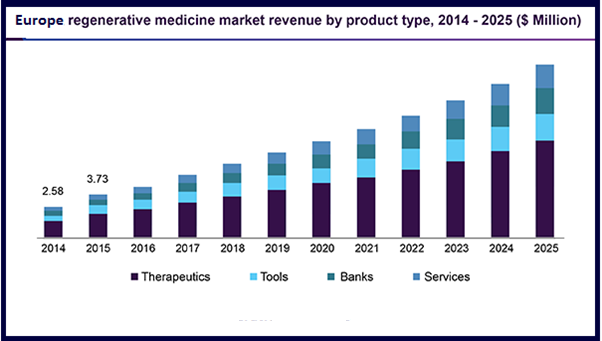
Today’s Market Study of Tissue Engineering and Regenerative Medicine in USA | Europe | Asia Pacific
- USA: Regenerative medicines market by therapy (cell therapy, gene therapy, immunotherapy, tissue engineering), region - global forecast to 2022, the worldwide regenerative medicines market size is predicted to succeed in USD 49.41 billion by 2022.
- Europe: the worldwide tissue engineering and regeneration market reached $17 billion in 2013. This market is predicted to grow to just about $20.8 billion in 2014 and $56.9 billion in 2022.
Asia-Pacific: Asia-Pacific regenerative medicines market is predicted to succeed in USD 10.71 billion by 2022 from USD 3.01 billion in 2016, growing at a CAGR of 28.90% during the forecast period 2016-2022.
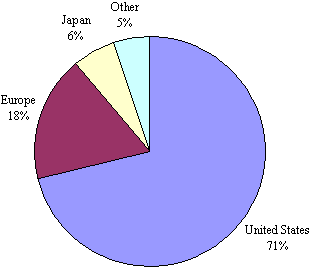
Major Regenerative Medicine and Tissue Engineering Associations around the Globe
- International Stem Cell Forum (ISCF)
- International Society for Stem Cell Research (ISSCR)
- UK Medical Research Council (MRC)
- Australian Stem Cell Center
- Canadian Institutes of Health Research (CIHR)
- Euro Stem Cell (ACR)
- Center for Stem Cell Biology
- Stem Cell Research Singapore
- UK National Stem Cell Network
Major Marketing Associations in Europe
Learn More
Regenerative Medicine Related Journals:
- Stem Cells
- Stem Cells and Development
- Stem Cells International
- Stem cells translational medicine
- Journal of Stem Cells
- International Journal of Stem Cells
- Journal of Stem Cells and Regenerative Medicine
- Calcified tissue research
- Calcified Tissue International
- Cell and Tissue Banking
- Cells Tissues Organs
- Cell and Tissue Biology
- Cell and Tissue Kinetics
- Cell and Tissue Research
- Cell Stem Cell
- Cellular and Molecular Biology Research
- Cellular and Molecular Immunology
- Cellular Physiology and Biochemistry
- Tissue Engineering and Regenerative Medicine
- Journal of Biomaterials and Tissue Engineering
- Journal of Clinical Rehabilitative Tissue Engineering Research
- Journal of Biomimetics, Biomaterials, and Tissue Engineering
Regenerative Medicine Related Hospitals:
- St. Catherine Specialty Hospital
- Kokilaben Dhirubhai Ambani Hospital
- Aspen Institute for Anti-Aging and Regenerative Medicine
- Cell and gene therapy catapult
- Nightingale hospital
- Great Ormond street hospital
- Indo-US Hospital
- USA Health University Hospital
- Central Alabama Veterans Health Care System West Campus
- Coosa Valley Medical Center
- Crestwood Medical Center
- Astria Regional Medical Center
- Dayton General Hospital
- Evergreen Health Monroe
- Kadlec Regional Medical Center
- MultiCare Allenmore Hospital
- Olympic Memorial Hospital
- Pullman Regional Hospital
- University of Pittsburgh Medical Center
Regenerative Medicine Related Universities:
- Johns Hopkins University
- Massachusetts Institute of Technology.
- Duke University
- Emory University-Georgia Institute of Technology.
- Stanford University.
- University of California--Berkeley.
- University of California--San Diego University of Pennsylvania.
- Case Western university
- Clemson university
- Colarando university
- Cornell university
- Drexel university
- Florida international university
- Harvard university
- George Washington university
Regenerative medicine Related Companies:
- Admedus
- 3-D Matrix
- Histogen
- Revotek
- Cerapedics
- Bio-Tissue
- NovaBone
- TissueTech
- Mega Biopharma
- EPISKIN
- Humeltis
- ACS-Biotech
- ROKIT
- BioAxone
- NIBEC
- Gel4Med
- Biostage
- Miromatrix
- Epithelix Sarl
- Novothelium
- DiscGenics
- Humacyte
- EpiBone
- Prellis Biologics
- Fesarius
- Cytex Therapeutics
- Indee Labs
- Orig3n
- Blue Rock Therapautics
- Rooster Bio
- Regeneus
- Integra life sciences
- Promethera biosciences
- Rubius Therapautics
To Collaborate Scientific Professionals around the World
Conference Date February 26-27, 2024
Speaker Opportunity
Supported By
All accepted abstracts will be published in respective Conference Series International Journals.
Abstracts will be provided with Digital Object Identifier by



